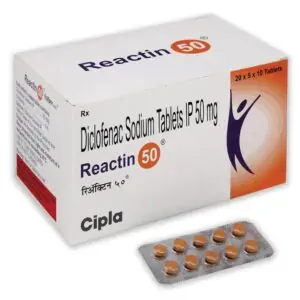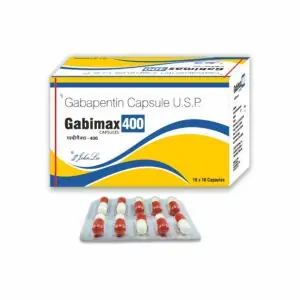Pain Killers
Showing 1–20 of 33 results
-

Aspadol 200 mg ER
Price range: $155.00 through $395.00Select options This product has multiple variants. The options may be chosen on the product page -

Aspadol 50 mg Tablets
Price range: $115.00 through $275.00Select options This product has multiple variants. The options may be chosen on the product page -

Aspadol Tapentadol 100 mg Tablets
Price range: $125.00 through $485.00Select options This product has multiple variants. The options may be chosen on the product page -

Carisoprodol 1000 mg Tablets
Price range: $135.00 through $535.00Select options This product has multiple variants. The options may be chosen on the product page -

Carisoprodol 350 mg
Price range: $95.00 through $335.00Select options This product has multiple variants. The options may be chosen on the product page -

Carisoprodol 500 mg Tablets
Price range: $115.00 through $275.00Select options This product has multiple variants. The options may be chosen on the product page -

Cyclobenzaprine 5 mg Tablets
Price range: $75.00 through $175.00Select options This product has multiple variants. The options may be chosen on the product page -

Diclofenac 50 mg
Price range: $75.00 through $175.00Select options This product has multiple variants. The options may be chosen on the product page -

Etozox 90 mg Tablets
Price range: $75.00 through $175.00Select options This product has multiple variants. The options may be chosen on the product page -

Flupirtine 100 mg Capsules
Price range: $75.00 through $175.00Select options This product has multiple variants. The options may be chosen on the product page -

Gabapentin 100 mg Tablets
Price range: $75.00 through $175.00Select options This product has multiple variants. The options may be chosen on the product page -

Gabapentin 300 mg Tablets
Price range: $95.00 through $335.00Select options This product has multiple variants. The options may be chosen on the product page -

Gabapentin 400 mg Tablets
Price range: $100.00 through $230.00Select options This product has multiple variants. The options may be chosen on the product page -

Gabapentin 600 mg
Price range: $115.00 through $275.00Select options This product has multiple variants. The options may be chosen on the product page -

GABAPENTIN 800 MG TABLETS
Price range: $115.00 through $190.00Select options This product has multiple variants. The options may be chosen on the product page -

Nervisign 300 mg Capsules
Price range: $105.00 through $385.00Select options This product has multiple variants. The options may be chosen on the product page -

Noosanta 100 mg Tablets
Price range: $125.00 through $485.00Select options This product has multiple variants. The options may be chosen on the product page -

PREGABALIN 300 MG CAPSULES
Price range: $105.00 through $385.00Select options This product has multiple variants. The options may be chosen on the product page -

Pregabalin 450 mg Capsules
Price range: $115.00 through $275.00Select options This product has multiple variants. The options may be chosen on the product page -

Pregabalin 500 mg Capsules
Price range: $135.00 through $535.00Select options This product has multiple variants. The options may be chosen on the product page
Pain is an unpleasant sensation brought on by a potential or existing tissue injury. A person in pain feels a complex sensation that puzzles both mental and physical responses. Pain is a protective mechanism that causes body organisms to withstand impulses. It results from injury or the fear of injury. The feeling of pain is subjective. Different people feel pain on various levels and describe it based on how intensely they have felt it. Responses and reactions to pain are influenced by social, cultural, cognitive, psychological, and genetic factors.
Individuals feel pain when the affected body part sends signals to the brain through the nerve fibre for interpretation. Nociceptors (specific nerves) identify the tissue damage and transfer the message to the brain. Meanwhile, a reflex occurs even before the message reaches the brain.
The brain releases feel-good hormones to counter the unpleasant sensation of the pain. Several medicated pain relievers are available on the market to soothe the pain and offer a sense of relief to the affected person.
Concept of Pain
Every kind of pain is biopsychosocial. The body experiences pain in response to interactions between three domains: biological, psychological, and social. People’s reactions to pain have varied since the dawn of human civilisation. Hippocrates, the ancient Greek physician, believed that pain started when any of the four substances—blood, phlegm, yellow bile, or white bile—became excessively or insufficiently present.
Let’s look into the core elements of the three main domains that influence pain.
Biological: Anatomical and biomechanical issues, ageing, genetics, inflammation, system malfunction, tissue damage, nutrition, and sleep.
Psychological: Beliefs, thoughts, memories, emotions, trauma, evaluative processes. Executive and attentional processes, coping mechanisms, etc.
Sociological: Socioeconomic status, family comfort, ethnicity, culture, race, environment, setting, and socioeconomic level, as well as access to care and attention.
Effective pain relief treatment methods demand a multidisciplinary approach that works on the brain, body, and psychology, employing medicines, physical therapy, occupational therapy, and other modalities.
Contributing Factors to Pain
The spinal cord receives a pain signal from an injury or damage to the body, which triggers an instant contraction of the muscles. Extreme situations occur when the reaction is so quick that the brain does not get the message. Within seconds of the body sensing pain, the brain receives the signal.
How the brain perceives these signals and how effective the nociceptor’s communication with the brain is determines how intense the pain is. The brain instantly releases feel-good hormones, such as dopamine, to compensate for the unpleasantness.
Several factors determine why individuals feel pain differently. Studies have shown that the main causes of an individual’s experience of pain are biological (including pain genetics and epigenetics, the nervous system, immune system, and endocrine system), psychological (such as fear and avoidance, mental and emotional health, mood, resilience, and thoughts about pain), and social. This is why pain is also known as a biopsychosocial experience. Hence, the treatment for pain is both complex and subjective.
What Are the Types of Pain?
There are primarily two types of pain: Acute and Chronic.
Acute Pain
Acute pain is generally short-lived and intense. It alerts the body to internal injuries or tissue damage. Simply treating the injury can eliminate the acute pain. This type of pain causes faster heartbeats, and the body enters fight-or-flight mode while experiencing it.
Acute pain comes in different types –
Somatic pain: It’s a superficial pain a person feels on the skin or the soft tissues just below the skin.
Visceral pain: This type of pain is caused by the body’s internal organs and cavity linings.
When someone experiences visceral pain elsewhere, other than at the site of harm, it’s referred pain.
Referred pain, for example, is the term used to describe severe discomfort in the hand and shoulder region following a heart attack.
Chronic Pain
Chronic pain persists for a longer duration than acute pain. It can range from mild to severe. Chronic pain often has no known remedy. Both migraine attacks and arthritis can cause this type of discomfort. Repetitive episodes of intermittent pain occur.
The sympathetic nervous system adjusts to the pain stimuli in chronic pain. Even after the injury has occurred, a person may still experience pain.
There are other types of pain as well,
Neuropathic Pain
Damage to the peripheral nerves results in neuropathic pain. These nerves directly connect the brain, spinal cord, and body. The pain can feel like electric shocks, numbness, or a tingling sensation.
Phantom Pain
Phantom pain results from amputation. A lost limb seems to be the source of the excruciating discomfort.
Central Pain
Abscesses, tumours, infarctions, or internal bleeding in the brain or spinal cord can all cause central discomfort. The pain persists, and the impact can range from mild to severe. Individuals suffering from central pain feel burning or pressing sensations.
One must accurately describe the discomfort to the physician for a correct diagnosis,
How to Diagnose Pain?
The intensity of pain one suffers is entirely subjective. And this is what guides the doctor to make a diagnosis. There is no objective scale to diagnose or measure the pain. So, the doctor considers the individual’s pain history. Therefore, the doctor needs to know information on –
Nature of pain – burning, stabbing, stinging
Radiation and intensity of the pain – when a person feels the pain, how it feels, and how it has expanded.
What Factors Help Relieve the Pain?
- When the pain feels the most throughout the day
- How one’s mood and daily life are impacted by the discomfort
- How the person understands the pain.
Several factors help identify and scale the pain. Clear communication between the doctor and the person in pain is crucial for diagnosing and measuring the pain.
Key Indicators of Pain
Individuals with cognitive impairments cannot rightly describe the pain, but there can be clear indicators that help detect and measure the pain. The indicators include,
- Crying
- Restlessness
- Groaning
- Resistance to care
- Fewer social interactions
- Clueless wanderings
- Lack of appetite
- Sleep disorder
Seeing the indications, the doctor helps treat the root problem. If it’s treatable, the doctor suggests relevant painkillers or the needed therapy to manage and cure the pain.
Treatment and Therapy
One must remember that pain is a protective mechanism that causes organisms to resist impulses directly connected with the fear of injury or bodily damage. As discussed earlier, one feels the depth of pain under the influence of social, cultural, psychological, cognitive, and genetic factors. For instance, an athlete may be able to tolerate or ignore pain more effectively than others. Order medicines online with Buy Steroids. Get the best quality painkillers like SOMA (Carisoprodol) 500 MG TABLETS, Tapentadol Tablets, PREGABALIN CAPSULES, GABAPENTIN TABLETS, Aspadol 100, Tapentadol Tablets with fast shipping processes with Buy Steroids. The alternatives include acupuncture, nerve blocks, psychotherapy, relaxation techniques, biofeedback, physical manipulation, heat and cold compress, physical therapy, etc.
Handpicked for their reliability and effectiveness.

Simple Pricing
Our pricing options are clear and understandable.

Shop Online
Order generic medicines online from the comfort of your home.

Guaranteed Privacy

24x7 Support
You can always speak to our pharmacist.
